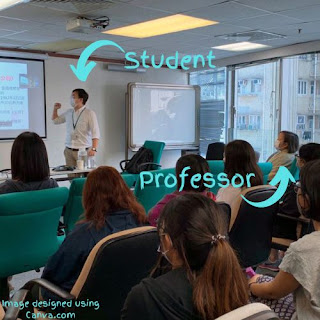Thank You for Sharting: Or, An Essay Concerning Autoscriptophobia
I learned how to type without looking at my fingers—touch typing, it’s called—sometime during the 8th grade. AOL instant messaging had become popular among my friends, and I spent an hour or two after school each day chatting with the girls I was too nervous to speak to in person. I would spend 40 minutes in the Glasgow Middle School cafeteria where I was close enough to these girls to smell their hand lotion, but I lacked the courage to do so much as make eye-contact with them. I would wait until I was at home, seated in front of the family computer, and watch for their names to appear as “Online.” Then, after waiting a bit longer so as not to appear too eager—as if I was actually doing bicep curls and had forgotten to power down the messenger--I would click their name and type, “oh hey” or “whats up”. Punctuation indicated that you took messaging too seriously, and I wanted to appear as casual as the dress code at McDonald’s.
This was all before emoticons and avatars, of course. On Messenger, individuality could only be shown through username and font. My font was lime green, because it seemed masculine and athletic, and I wrote only in lower-case as if pressing the shift-key wasn’t worth the trouble. Touch typing kept me from losing sight of the beautiful or quirky fonts of the objects of my affection. I could stare longingly at Candace’s Glasgow Scottie Blue lettering, Taryn’s nautical navy, and Bridget’s simple black on white while I typed my questions and answers. Touch typing let me respond immediately without stopping to search for the “M” key and, eventually, the parentheses and semicolon.
Still, touch typing occasionally backfired. If my hand was out of place on the keyboard, for instance, then it was possible to think I was writing “That’s hilarious!” when what I actually wrote was “Tjat’s jo;aropis!” This happened while messaging my friend, Michael, who was by all measures smarter than I was. I apologized and explained that I wasn’t an idiot, but that my hand had been exactly one key to the right. He double-checked the letters and confirmed that I was telling the truth. This puffed me up because it was a way of announcing that I could type without looking without having to boast about it myself. Why else would I write “jo;aropis”? There is no equivalent to this sort of mistake in the spoken word—not unless we include things said during a stroke. On Messenger, words like “jo;aropis” are more likely to be attributed to a cat walking over the keyboard than anything meaningful. The offender is excused for their moment of inattention, and everybody moves on.
But sometimes touch typing errors are more subtle, which leaves it up to the reader to decide what it says about the offender. In the 10th grade, the same Michael and I were reading classroom instructions typed by Mr. DeLeon. The instructions read, “Today we will be going tot he library to listen to a speaker discuss our state’s history.” Michael and I recognized the mistake immediately and, ignoring the only obvious explanation, decided that our American History teacher had a peculiar way of speaking. We adopted the phrase and used it later that week to ask if we could be excused to go “tot he bathroom” or “tot he counselor’s office.” Even today I can’t read “to the” without remembering Mr. DeLeon’s typo and asking my wife if she’d like to go “tot he art museum.”
In addition to misspelling words that genuinely confuse me—the word “niece” always looks misspelled no matter how I arrange the letters—I am regularly guilty of touch typing errors. The most outlandish of these occur when my fingers capture what I’m thinking before I've made up my mind about how to say it, which leaves me with entire sentences that are as confusing as “Tjat’s jo;aropis!”—sentences with two subjects or sentences without a verb.
Sadly, I catch these nonsensical sentences in my online classes all the time. I have a bad habit of redesigning every activity and course I’ve done, which means that I almost never get around to second and third revisions. I imagine that these errors lead students to conclude that their psychology professor is several volumes shy of an encyclopedia.
But the errors that command in me the greatest scriptophobic horror are the ones take place in online discussion boards. I often ask open-ended questions that encourage students to tell a story about themselves or otherwise shine a light on their lives. In the classroom, this is when I would say something showing how grateful I am such as, “How lovely of you to share!” or “That showed courage.” But it’s different online. In my experience, students who are online tend to share stories that are deeper and more personal than they would in the classroom. I still want to thank them and show that I’m human, but the responses always seem scripted when typed. I type them anyway, because what else can I do? Still, I worry that my ambivalence might lead to a silly error, a Freudian slip of sorts—the way someone might laugh at a serious statement mistaking it for a joke, then have to backpedal out of a disastrous situation.
I worry that one day a student will share a personal and traumatic story of being sexually abused or harrassed by a family member. The story will grip me and, even as a knot is forming in my throat, I’ll shake my head and write, “Thank you for sharting.” I will submit my reply before catching the mistake. No amount of apologizing or rationalizing could possibly undo the initial shock and disappointment the student would have felt when reading the personalized response from their so called understanding and thoughtful professor.


Comments
Post a Comment